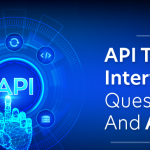In the realm of big data processing, two prominent open-source players, Apache Spark and Apache Kafka, have taken center stage. While both serve as integral components of the big data ecosystem, they cater to distinct facets of data management and analytics. In this blog post, we will embark on a comprehensive comparison journey between Apache Spark and Apache Kafka, dissecting their core attributes, use cases, and performance characteristics. To facilitate your decision-making process, we’ll conclude with an informative comparison table.
Apache Spark: The Swiss Army Knife of Data Processing
Apache Spark is a distributed computing framework that has garnered widespread acclaim since its inception in 2014. Celebrated for its blazing speed and versatility, Spark offers a unified platform for an array of data processing tasks. Here are some key features of Apache Spark:
- In-Memory Processing: Spark’s ability to retain data in memory accelerates processing speed by reducing disk I/O, making it a top choice for iterative algorithms and interactive queries.
- Ease of Use: With high-level APIs and support for multiple programming languages such as Java, Scala, Python, and R, Spark caters to a broad spectrum of developers.
- Unified Framework: Spark serves as a one-stop-shop for batch processing, interactive queries, machine learning, graph processing, and real-time stream processing.
- Machine Learning: Spark boasts the MLlib library, encompassing a comprehensive collection of machine learning algorithms, making it a go-to tool for data scientists and engineers.
- Streaming Capabilities: Through Spark Streaming, real-time data processing becomes a reality, with seamless integration into other streaming technologies.
http://informationarray.com/2023/09/13/apache-spark-vs-apache-flink-a-comprehensive-comparison/
Apache Kafka: The Backbone of Real-Time Streaming
Apache Kafka, conversely, is a distributed event streaming platform crafted for high-throughput, fault-tolerant, and real-time data streaming. Here are some key features of Apache Kafka:
- Publish-Subscribe Model: Kafka adheres to a publish-subscribe model, where data producers send information to topics, and consumers subscribe to these topics to receive data in real-time.
- Durability and Fault Tolerance: Kafka ensures data durability by storing it robustly, offering fault tolerance through data replication across multiple brokers.
- Scalability: Designed to scale horizontally, Kafka efficiently manages vast data volumes and accommodates a wide array of use cases.
- Real-Time Streaming: Kafka shines when it comes to real-time streaming scenarios and serves as the foundation for constructing event-driven applications.
- Log-Based Architecture: Kafka adopts an immutable log-based data storage approach, which simplifies data processing and allows for the seamless replay of events.
Apache Spark vs. Apache Kafka: A Detailed Comparison
Let’s now dissect the key distinctions between Apache Spark and Apache Kafka across various dimensions using the table below:
| Feature | Apache Spark | Apache Kafka |
|---|---|---|
| Data Processing Type | Batch, interactive, machine learning, streaming processing | Real-time event streaming |
| Data Storage | In-memory, distributed file system (HDFS) | Durable and distributed log |
| Ease of Use | Easier learning curve with high-level APIs | Requires configuration and adaptation for specific use cases |
| Latency | Lower latency for batch and interactive processing | Low-latency, real-time streaming |
| Scalability | Horizontally scalable, but scaling may require resource provisioning | Designed for horizontal scalability, optimized for high-throughput |
| Fault Tolerance | Offers fault tolerance through lineage information and data replication | Provides fault tolerance through data replication across brokers |
| Use Cases | Versatile, suitable for a wide range of data processing tasks | Ideal for building real-time data pipelines and event-driven applications |
| Ecosystem Integration | Has a growing ecosystem with libraries and integrations | Features an ecosystem of connectors and tools designed for stream processing |
| State Management | Offers limited support for state management | Primarily focuses on data transport and durability |
When to Choose Apache Spark:
- Diverse Workloads: Opt for Apache Spark when your data processing needs encompass batch processing, interactive queries, machine learning, and streaming processing, all under one roof.
- Versatility: Apache Spark adapts seamlessly to a wide spectrum of use cases, making it suitable for organizations with diverse data processing requirements.
- Mature Ecosystem: Spark boasts a mature ecosystem equipped with a variety of libraries and integrations, supporting different aspects of data processing.
http://informationarray.com/2023/09/13/apache-spark-vs-hadoop-unraveling-the-big-data-dilemma/
When to Choose Apache Kafka:
- Real-Time Streaming: Apache Kafka emerges as the preferred choice when real-time data streaming, event-driven architectures, and data pipeline construction are your primary objectives.
- High Throughput: If your organization handles substantial data volumes and demands reliable management of high-throughput data streams, Kafka’s architecture is tailor-made for such scenarios.
- Log-Based Data Storage: Kafka’s log-based data storage approach proves advantageous when durable and ordered storage of event data is a critical requirement.
Here are some FAQS based on Apache Spark
- What Are the Primary Use Cases for Apache Spark?
- Apache Spark finds its primary utility in various large-scale data processing and analytics tasks. It excels in batch processing, interactive queries, machine learning, graph processing, and real-time stream processing.
- What Role Does Apache Spark Play in the Field of Big Data?
- Apache Spark serves as a vital open-source distributed computing framework tailored for big data processing. Its standout feature is its capability for high-speed, in-memory data processing, making it a formidable tool for efficiently handling extensive datasets.
- What Exactly Is Apache Spark Streaming?
- Apache Spark Streaming represents a crucial component within the Apache Spark ecosystem. It enables real-time data processing, allowing for the analysis and manipulation of data streams in real-time. This functionality is instrumental in applications such as monitoring, fraud detection, and live analytics.
- How Can One Install Apache Spark on an Ubuntu System?
- To set up Apache Spark on an Ubuntu machine, follow these steps:
- Ensure that you have Java installed, preferably Java 8 or a later version.
- Download the Apache Spark distribution from the official website.
- Extract the downloaded package to your chosen directory.
- Configure environment variables, including setting up
SPARK_HOME. - Customize Spark configurations as required for your specific use case.
- Your Ubuntu system is now ready to run Apache Spark applications.
- To set up Apache Spark on an Ubuntu machine, follow these steps:
In the grand showdown of Apache Spark vs. Apache Kafka, the choice rests upon the specific use cases and data processing requirements unique to your organization. Apache Spark excels in versatility, catering to a multitude of workloads, while Apache Kafka shines as a real-time event streaming platform, the ideal foundation for constructing data pipelines and event-driven applications. Assess your needs meticulously to determine which of these formidable tools aligns best with your big data processing objectives.








